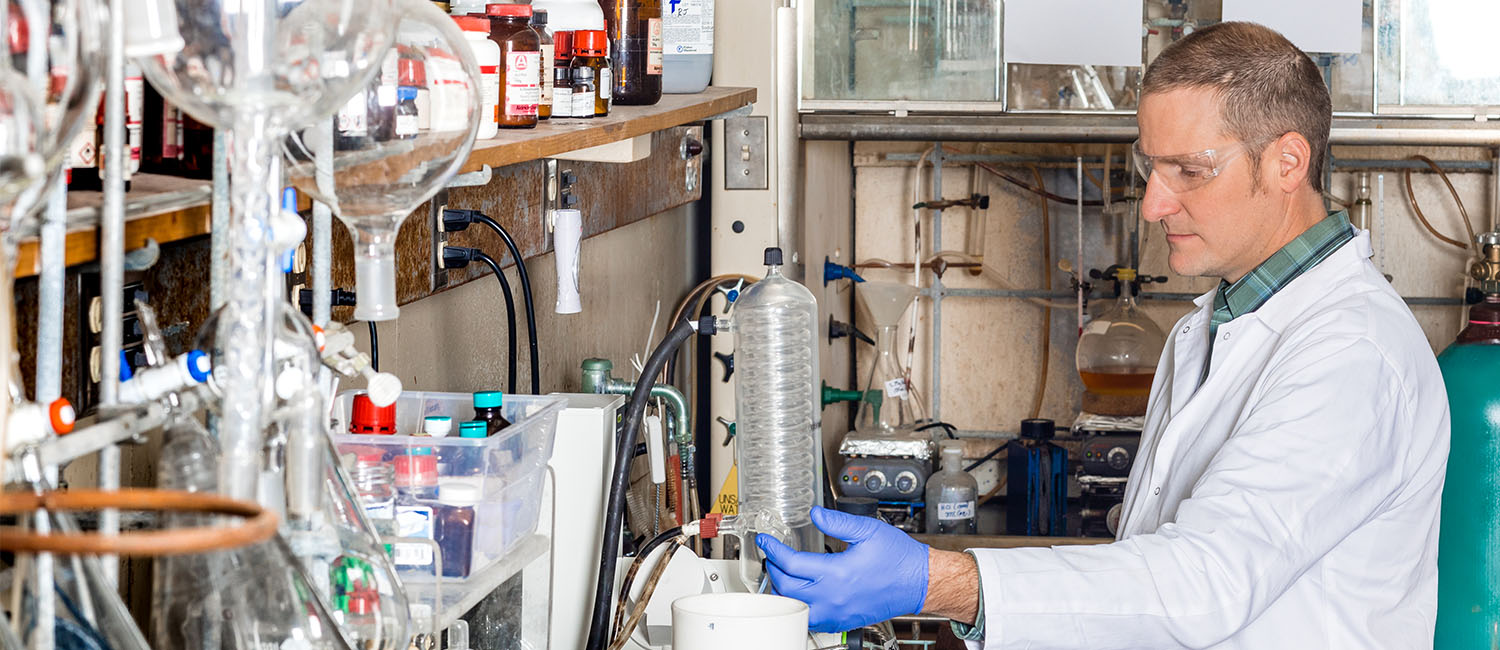
A promising search for relief without addiction
Daniel Knutson watched as his wife of nearly 10 years struggled with depression and migraine headaches until an addiction to prescription medications took her life.
Knutson had worked for nearly two decades in the pharmaceutical industry, and about the same time as his wife’s death, he was planning to return to school. The confluence of timing gave him a new calling – help develop nonaddictive drugs to alleviate what so troubled his wife.
“My graduate work is my passion,” says Knutson, a doctoral candidate in chemistry at UWM’s College of Letters & Science, “my heartfelt attempt to prevent anyone else from having to bury a loved one.”
He’s making significant progress. Knutson and his collaborators have discovered a compound with the potential to treat pain and mental illness while sidestepping the destructive problems that can occur when using current popular medications.
Benzodiazepines are prescribed by doctors to treat anxiety, which is frequently associated with depression. Opioids are prescribed to treat migraine pain. These drugs interact with many receptors in the brain, and this “master key” approach unlocks potentially harmful side effects. For example, in addition to pain relief, opioids produce euphoria, opening the door for the misuse that leads to addiction.
Knutson is developing a compound that will interact with a site on the specific receptor in the brain – the α6 GABA A receptor – that’s associated with depression, head and neck pain, migraine and schizophrenia. “It’s like a shot in the dark, trying to find the exact key to unlock a specific receptor,” Knutson says.
His work proceeds under the guidance of James Cook, a distinguished professor of chemistry and one of UWM’s most prolific inventors, and it uses state-of-the-art mass spectrometers at the Shimadzu Laboratory for Advanced and Applied Analytical Chemistry.
Knutson synthesized the world’s first and only α6-specific molecule at Cook’s lab, and the molecule’s design and uses were patented in 2016. Research has shown encouraging results to treat just the disease, with no side effects that might otherwise arise from the “master key” approach. The work, affiliated with UWM’s Milwaukee Institute for Drug Discovery, was published in February 2018 in the Journal of Medicinal Chemistry.
Knutson also found a way to improve the metabolic stability of the drug compound. This essentially means that instead of having to take a large, horse pill-sized tablet, a patient could treat the illness with a much smaller pill.
The next step involves looking for investment partners who can fund the research to carry it forward into clinical trials.